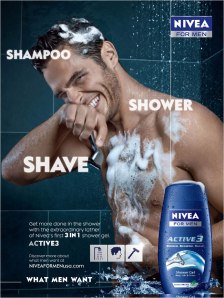The previously shocking phenomenon of men wearing perfume, has become mundane in its ubiquity by now. And men looking pretty in perfume ads is not exactly rare either. So the latest Dior Homme ad starring Twilight heart throb Robert Pattinson almost passed me by. The fact I noticed it enough to stop and think about what it is selling, (apart from top notes of lavendar, sage and bergamot), is mainly due to the fab Led Zeppelin track accompanying the images.
The advert, shown above in its uncensored ‘directors cut’ form, expresses something else commonplace, but probably still worth commenting on: metrosexual machismo. The fragance itself might be screaming ‘IM STILL STRAIGHT’ despite the way it has made the lovely Mr Pattinson sensuous, coquettish, even passive (in this version of the ad, his girl straddles him in bed, and then he’s seen lying back looking all come to bed eyes into the camera). Metrosexuality may have gone mainstream quite a few years ago now, but it’s still not quite out.
Some of the motifs of this advert are positively 1970s in their macho symbolism – the beautiful girl on Robert’s arm reassuring us he’s not, you know… the car he drives down the beach in full on phallic pacifier mode, the red-blooded rock n roll Led Zep track. They all try and comfort the audience, and the man in the street about to indulge himself in some Dior Homme, that men’s self love is not gay. The (post coital?) cigarettes in the (ahem) uncut version of the ad didn’t make it to television, being just too 1970s and against 21st c health and safety guidelines. And, inspite of the ‘uncensored’ tag, the film as a whole is very safe.
Of course wearing perfume doesn’t make you gay, but it doesn’t keep you straight, either. And I for one would like to see a few more media representations of metrosexuality that celebrate its sexual ambiguity. That is what I love most about it after all.





















